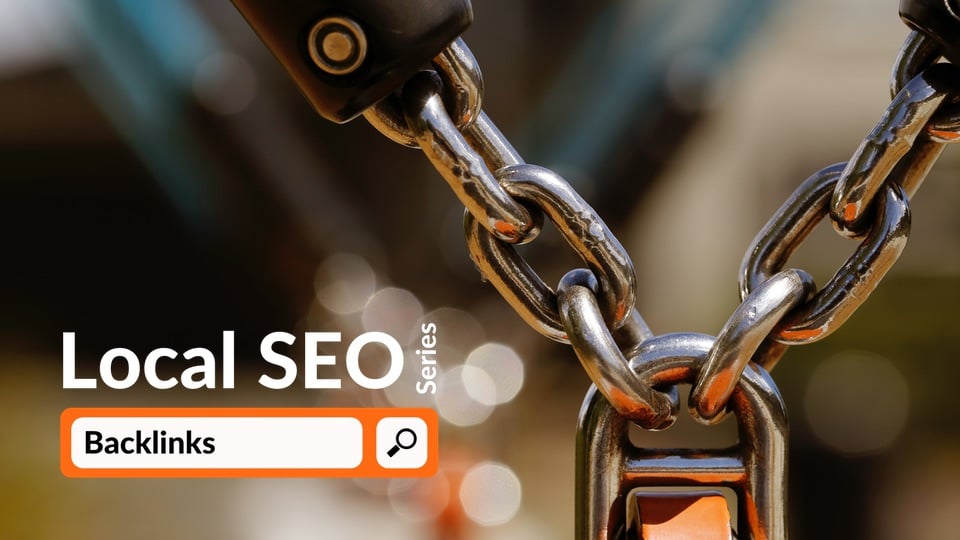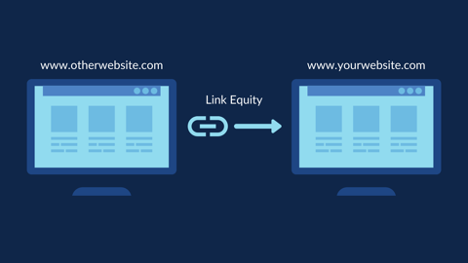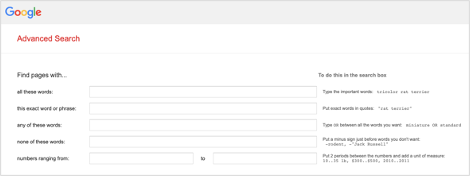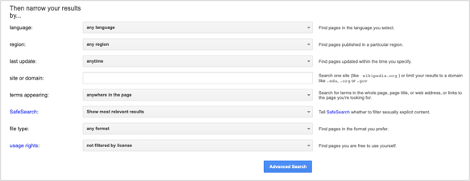
If you’re looking to boost your business’ local SEO efforts, consider implementing a local link building strategy. Building local backlinks requires more outreach and hands-on effort, but the benefits your business can reap make it worth your time and energy!
In this ultimate guide, you’ll learn the ins and outs of local link building and how you can use these strategies to drive relevant referral traffic to your own website. Read straight through, or jump to the section you wish to read!
What’s a backlink?
What’s a local backlink?
Why are local backlinks important?
What’s the difference between a backlink and a citation?
9 Local Link Building Strategies
What’s a Backlink?
A backlink is a link from another website to your own website. To put it simply, backlinks can help to drive relevant referral traffic to your website and boost your domain’s authority in the eyes of search engines.
You can think of your backlink profile like your reviews on Google My Business; having many 5-star reviews on your Google My Business listing looks great to potential customers and Google. For your backlink profile, having quality backlinks from high authority domains sends a positive signal to search engines. Earning high-quality backlinks can also help to transfer positive link equity, or credibility and authority, to your own website.

On the flip side, having many 1- and 2-star reviews on your Google My Business listing sends a negative signal to potential customers and Google; so too does having many low-quality, spammy backlinks. In terms of earning backlinks, you should always follow the rule of quality over quantity.
What’s a Local Backlink?
Backlinks can come from many sources; a few common sources include guest blog posts and your social media profiles. Local backlinks are slightly different than standard backlinks in that they tend to come from sources in your service area or local target market. Sounds pretty straightforward, right? That’s because it is; you can earn local backlinks from a variety of sources including local business directories, newspapers, and blogs, to name a few.
Why Are Local Backlinks Important?
Aside from the obvious reason of driving relevant, and local, referral traffic to your website, earning local backlinks can help to establish your business as a go-to resource in your area. Taking on a local link building strategy requires a lot of manual outreach, but it also encourages you to make new connections in your community, which can lead to new business and meaningful relationships. Plus, positive PR is always a bonus!
What’s the Difference Between a Backlink and a Citation?
In the SEO community, the terms backlink and citation get thrown around a lot, and sometimes the two get mixed up. A backlink, again, is a link from another website to your own. This link typically uses relevant anchor text to link to a similar page on your website. A citation , on the other hand, is when an online directory, typically, features your business’ name, address, and phone number. These three pieces of information are also referred to as your business’ NAP details. Sometimes an online directory will also feature your business’ website. In this scenario, you would have both a citation and a backlink from this online directory.
Think you’re ready to take on local link building? Check out these 9 strategies for building local backlinks!
9 Local Link Building Strategies
1. Create Social Media Profiles
The first local link building strategy is setting up social media profiles. Using platforms like Google My Business, Facebook, and Instagram is a great way to connect with your customers outside of your website, and it’s also one of the easiest ways to create a backlink to your website. When you set up a business page on Facebook, for example, you can add your website’s URL, thus creating a backlink to your website! Social media sites also tend to have high domain authorities, so these types of backlinks help to strengthen your website’s backlink profile.
For some social media platforms, you can also feature your business’ NAP details, which helps search engines validate your business’ information. It’s important to note that you should only create backlinks from social media sites that you intend to actively use to grow your business’ presence.
2. Find Local Business Directories
Large online directories like the Better Business Bureau or Whitepages are great for featuring your business’ NAP details and earning a backlink from a high-authority domain; however, directories like these are often not tailored to local search results. Instead, you should look for local online directories in your community that locals refer to when searching for specific businesses or services.
To find local business directories in your area, you can use a set of advanced search tactics on Google to return more specific search results. Google also offers a free Advanced Search tool to simplify this process for you. You simply input your target keyword or phrase into Google’s Advanced Search tool to find pages with your target keyword or phrase. Then, you can further narrow your results to only return pages that contain your target keyword or phrase in their title or URL, for instance.


Once you find a handful of local directories, you will need to determine if they receive a decent amount of traffic, align with your business, and have any fees. Many local directories offer a free listing service, while others may require a paid subscription. For any paid local directory, make sure you do your research and determine if the directory’s benefits will outweigh the costs.
3. Find Industry-Specific Directories
Another type of online directory that is great for building local, or standard, backlinks to your website is an industry-specific or niche directory. These directories align with your industry and typically feature your competitors’ information as well. In some industries, like the legal industry, for example, niche directories play an important role in the buyer’s journey. A backlink from a niche directory can lead to relevant referral traffic to your website, and serve as a great source of pre-qualified leads.
To find industry-specific directories, you can also use Google’s Advanced Search tool to only return search results that contain your target keyword or phrase. For example, you could plug in the target phrase, “directory for lawyers” to only return pages that contain this phrase. You could then further narrow your results to only show pages where the phrase appears in the title or URL. Some industry-specific directories require payment or an ongoing subscription, so, again, make sure you do your research and determine if the directory aligns with your business.
4. Reach Out to Local Newspapers, Forums, & Communities
While this local link building strategy requires a bit more manual outreach, reaching out to local newspapers, forums, or online communities is a great way to promote your business in your community and potentially earn some quality local backlinks in the process.
If you already know of some local newspapers, forums, or communities in your area, you can use Google’s Advanced Search tool to find pages on each website or domain that use your target keyword or phrase. Common target phrases to search include the following:
- business feature
- business spotlight
- entrepreneur spotlight
- local business feature
- local business spotlight
- small business spotlight
Once you determine if these local newspapers, forums, or communities publish articles or posts relating to your target keyword or phrase, then you can align your content or offering with their publication. If you can truly align your content or offering with their publication, you will show the publication that you can benefit their audience, which will improve your chances of receiving a backlink.
Next, you can submit a press release or reach out to the site’s point of contact to see if they will feature your content or offering on their website. When reaching out to the site’s point of contact, make sure to connect with them before pitching your content. This gives you the opportunity to make introductions, gauge their interest, and determine next steps. If it’s the right fit and you share your content, keep your fingers crossed for a quality backlink!
5. Find Sponsorship Opportunities
Finding sponsorships opportunities is another way to earn local backlinks while growing your business’ visibility in your community. Ultimately, you should only use sponsorships as a local link building strategy if the entity you sponsor means something to your business. Types of entities your business could sponsor include charities, events, or even suppliers; the options are endless. Since most local businesses’ websites only receive small amounts of traffic, they tend to have lower domain authorities. This means you shouldn’t expect a huge boost in your SEO efforts from these backlinks alone.
6. Reach Out to Local Bloggers or Influencers
If you know of any local bloggers or influencers in your area, consider reaching out to them to do a feature on your business. You can also offer to trade your product or service with them for a feature; this way, they also receive some sort of perk in the process. Since they will most likely have a decent following, this type of local link building tactic can help to increase your business’ visibility in your community and, in turn, reach more potential customers.
7. Monitor Competitors’ Backlinks for Relevant Opportunities
Next, you can monitor your competitors’ backlinks to identify gaps in your own backlink profile. This strategy requires more time and effort, and the help of a tool like Ahrefs or SEMrush. With SEMrush, for example, you can plug in your competitors’ websites and see each of their backlink profiles including their total number of backlinks and referring domains, page and domain authority, as well as any backlinks or referring domains shared among you and your competitors. Once you find the overlap, you can identify any gaps, meaning relevant domains that link to your competitors’ websites but do not link to your website. From here, you can reach out to these domains to see if they can also link to your website.
8. Find Broken Links
Finding broken backlinks is also a more hands-on link-building strategy that requires the help of a tool like Ahrefs or SEMrush. With either of these tools, you can identify your competitors’ broken backlinks, reach out to the backlinking site’s point of contact, and share a link to similar content on your own website that they can link to instead to fix the broken link.
9. Provide Updated Content
Similar to finding broken links, you can also look at websites that produce similar content to your own and identify any of their content that’s outdated and receives strong backlinks. Using a tool like Ahrefs or SEMrush can help to simplify this process. Once you identify the outdated content, you can see if you have a more recent piece of content, or you can produce a newer piece of content. Then you can reach out to the backlinking site’s point of contact to encourage them to link to your piece of content instead.
There you have it; nine local link-building strategies you can use to grow your own business’ backlink profile! Building local backlinks requires a bit more effort than other local SEO tactics, but the amount of time and energy you put in will result in a wealth of benefits for your business. Just a few include a stronger foothold in your community, an increase in referral traffic to your website, and a boost in your website’s domain authority.
Check out the next post in our Local SEO series: How To Optimize Your Site For Voice Search Users.
To start building your Local SEO Strategy, download the Local SEO Checklist E-book.



